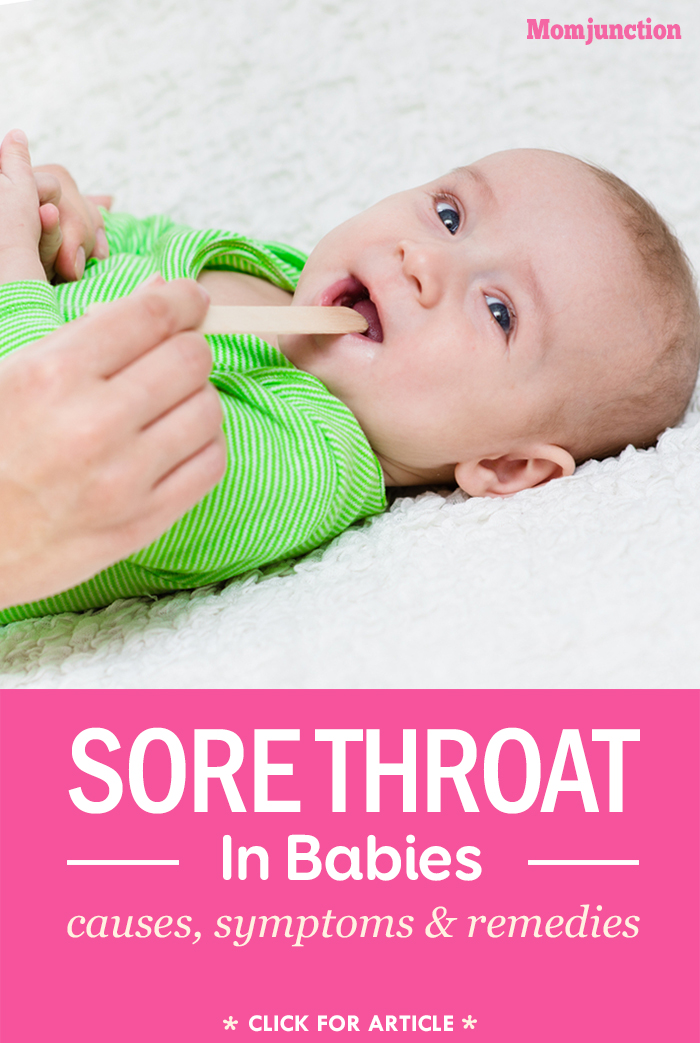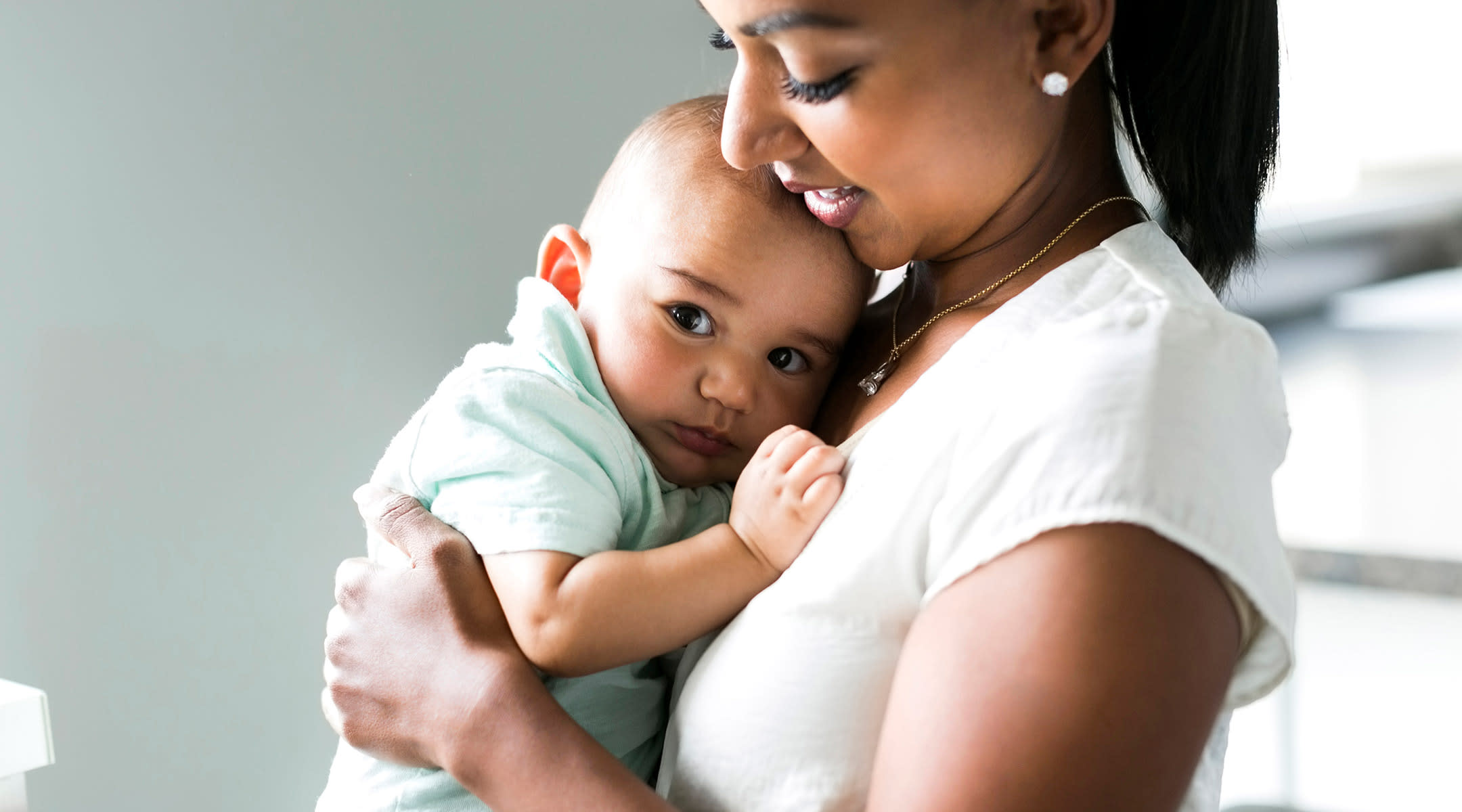Sore Throat In Babies

Contents:
- Causes of Sore Throat
- Types of Sore Throat in Babies
- Sore Throat With and Without Temperature
- How to Remove the Sore Throat in Children
Sore Throat in Toddlers
Sore throat is a frequent sign of acute respiratory infections, occurring with lesions of the upper respiratory tract, such as tonsillitis and pharyngitis. Everyone reacts differently to such pain, especially babies.
Poor health and anxiety are associated with sore throat, complicate the course of the disease and delay the healing process. That is why the sore throat relief becomes a priority in the treatment of respiratory infections in children.
Causes of Sore Throat
It is important to mention that sore throat is not a single illness, but a symptom that exhibit a variety of diseases. An inflammatory process is usually a cause of sore throat, and pathogenic microorganisms – viruses, protozoa, fungi or bacteria, create it.
Infectious agents are introduced into the mucosa of the oropharynx and tonsil, irritate and damage it, provoke vasodilatation, edema, as well as the release of biologically active substances, which affect the nerve endings and cause pain appearance. Furthermore, the glands function is disturbed and l secretion of saliva is reduced, leading to the appearance of dryness and pharynx in the throat and increasing pain and discomfort.
Most often, the appearance of sore throat in children is a result of the following diseases:
- acute respiratory viral infections (ARI);
- inflammatory diseases of the throat (pharyngitis);
- inflammatory diseases of the tonsils (tonsillitis, tonsillitis);
- inflammatory diseases of the pharyngeal tonsils (adenoids);
- inflammatory diseases of the larynx (laryngitis);
- inflammatory diseases of the mouth (stomatitis);
- general infections (infectious mononucleosis, diphtheria).
Another cause of sore throat is mucosal irritation by substances contained in the air (for example, industrial waste, cigarette smoke), and entering of the foreign body into the child’s oropharynx.
Types of Sore Throat in Babies

Like other varieties of pain, sore throat in children can be very diverse. Depending on the prevalence, intensity and precise localization of the inflammatory process, it can be local (right or left) or diffuse.
Pain duration depends on the nature of the disease and the severity of the inflammatory process – will it be a short-term (1-2 days) or long term (from one to several weeks), recurrent or permanent. Intensity of sore throat together with diseases of the oropharynx and tonsils may also be different.
Sometimes it can be a little discomfort, scratching or irritation, which disappear after the baby drinks warm milk or tea, which do not irritate the mucous. In other cases, the sore throat reaches high intensity, prevents the child to eat and drink, violates and impairs sleep. Moreover, it is impossible to assess the severity of the disease on the pain level in the throat accurately because there is no clear link between these symptoms and course of the disease.
Sore Throat With and Without Temperature
Sometimes a sore throat is the only manifestation of the respiratory system disease. However, acute viral and bacterial infections cause the appearance of a whole range of symptoms, including runny nose and nasal congestion, dry cough and symptoms of fever and intoxication. The combination and severity of the symptoms will depend on the nature of the infectious agent, the intensity of the local inflammatory process, the activity of the body's defenses, as well as pain threshold level and characteristics of child's nervous system.
Generally speaking, a sore throat without fever often corresponds to a mild form of respiratory infection, sore throat with 37-38 °C temperature – to a moderate disease, and sore throat with high (over 38 °C) body temperature is typical for heavy course of the disease. However, sometimes there is no clear correlation between the change in body temperature, weight and infection. Therefore, a pediatrician or family doctor should examine every child with suspected respiratory infection.
Treatment, How to Remove the Sore Throat in Children

- First of all, it is necessary to calm the child down, move him away from drafts and put him to bed. You should also ensure that the air is warm and moist and does not contain irritating substances (e.g. cigarette smoke).
- It is important to give plenty of warm liquids – milk, fruit drinks, herbal teas (chamomile, lime), broth hips, juices diluted with water and non-carbonated drinking water.
- Correct drinking regime helps to heal your child, eliminate toxicity, prevent dehydration and bring large doses of vitamins to his body. Through the warming and moistening of mucous of oropharynx, it reduces the severity of sore throat in children.
- If the child wants to eat, it is necessary to ensure his proper nutrition. Food should be warm, light and gentle, without sour, salty, pungent and spicy dishes and products. The optimal food for the most acute period of infectious and inflammatory diseases are the dairy products, cereals, omelets, fruit and vegetable purees, soups and pureed soups. If the child does not want to eat, (it often happens in such situations), do not insist on it.
- In the majority of cases, sore throat requires local treatment with anti-inflammatory, antiseptic, analgesic and raising local protection drugs. The rinse, irrigation, inhalation to the throat or resorption of special drugs cat remove the focus of inflammation.
- You can use solutions of baking soda, table and sea salt, furacilin for gargling, as well as a variety of teas and infusions of herbs. For children aged 3-4 years, who are not able to rinse their mouth, you can use throat irrigation with special pharmaceutical products with anti-inflammatory, antimicrobial and analgesic activity.
- Use infusions of herbs and essential oils for inhalation. They are delivered to the oropharynx using steam or ultrasonic nebulizer.
- Tablets, pastilles and lozenges for resorption should be used in an age when the child can keep drug in the mouth for a long time and dissolve it, without the risk of choking.
- If your child has a sore throat, there are no reasons to panic. The main thing is the right treatment.